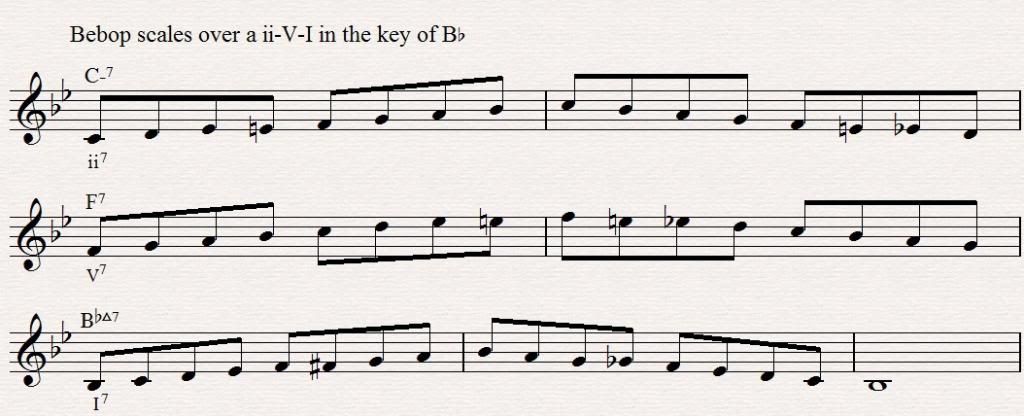In order to improvise in this jazz style, it is helpful to first learn the idiomatic harmonic "language" (vocabulary). So, here are a few bebop scales (each beginning on C) which can be practiced in all keys, and then applied to your soloing.
 |
| Three bebop scales |
The scales are constructed by taking a traditional scale/mode and altering it slightly by adding one chromatic passing tone between certain scale degrees. This additional note results in an eight-note scale (rather than the normal seven-note scale), which is handy when dealing with 4/4 time signatures. The scale, played as eight eighth notes, perfectly fills up a measure, and helps the soloist more easily place chord tones on the strong part of the beat.
In order to apply these scales, consider a 2-5-1 progression. Use the Dorian bebop scale on the 2, Mixolydian bebop on the 5, and Major bebop on the 1. (You'll notice that the Dorian bebop scale contains the same notes as the Mixolydian bebop scale. Indeed, they are both modes of the same scale.) The example below applies these scales to a 2-5-1 in B-flat major.
 |
| Dorian, Mixolydian, Major |
